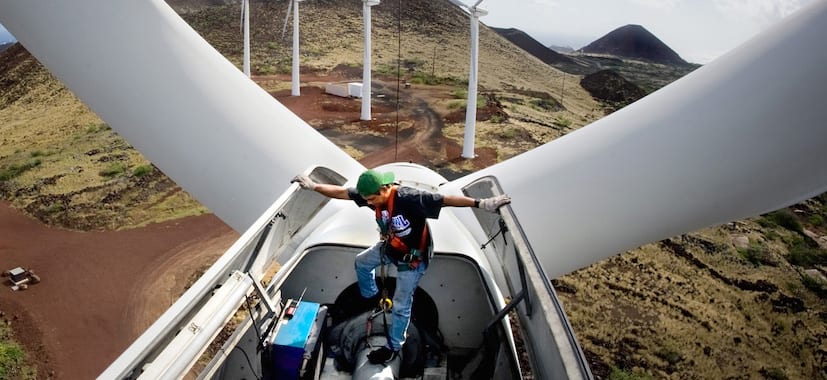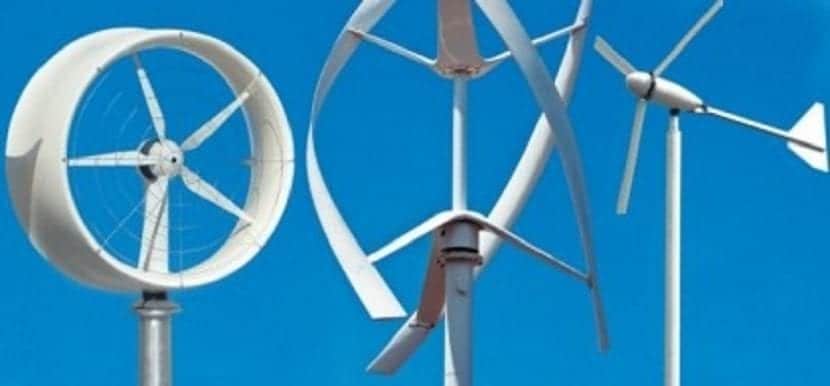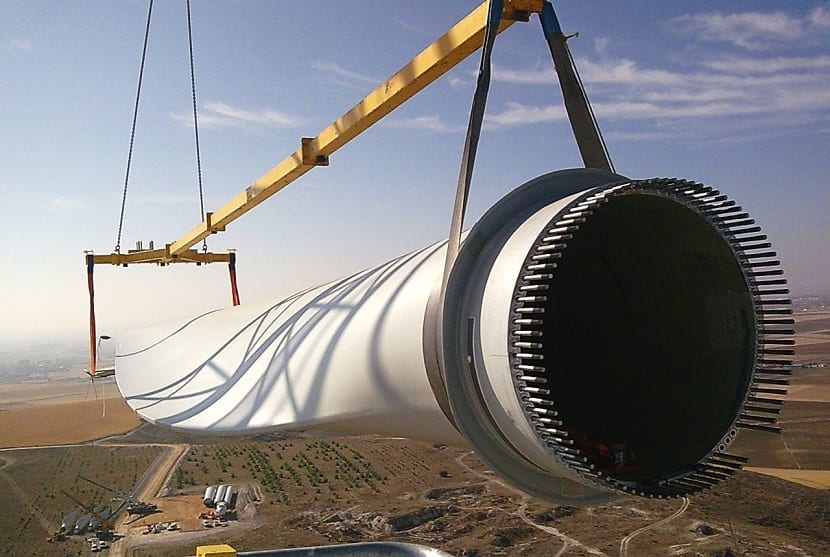
But as the wind becomes electricity? The direct antecedent of the current wind turbines are the old mills, which even today are still used, for various tasks such as extracting water or grinding grain. A Windmill It is a machine that has blades or blades attached to a common shaft, which begins to rotate when the wind blows.
This rotating shaft is linked to different types of machinery, for example machinery for grinding grain, pumping water or generate electricity.
To get electricity, the movement of the blades drives an electrical generator (an alternator or a dynamo) that converts the mechanical energy of rotation in electrical power. Electricity can be stored in batteries or sent directly to the grid. The operation is quite simple, what is getting complicated is the investigation and construction of wind turbines increasingly efficient.
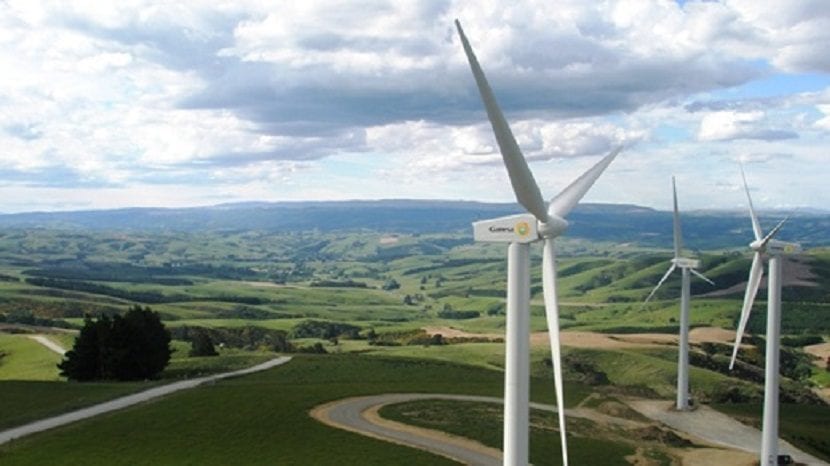
Types of Wind Turbines
A windmill can be of horizontal axis, which are the most common today, or there are also vertical axis.
From Wikipedia the definition of vertical wind turbines or horizontal as an electric generator running converting the kinetic energy of the wind in mechanical energy and through a wind turbine in electrical energy.
Those with a vertical axis stand out for not needing the orientation mechanism and what is the electric generator can be arranged on the ground. On the other hand, those with a horizontal axis, allow to cover a wide range from small power isolated applications to installations in large wind farms.
Vertical wind turbines
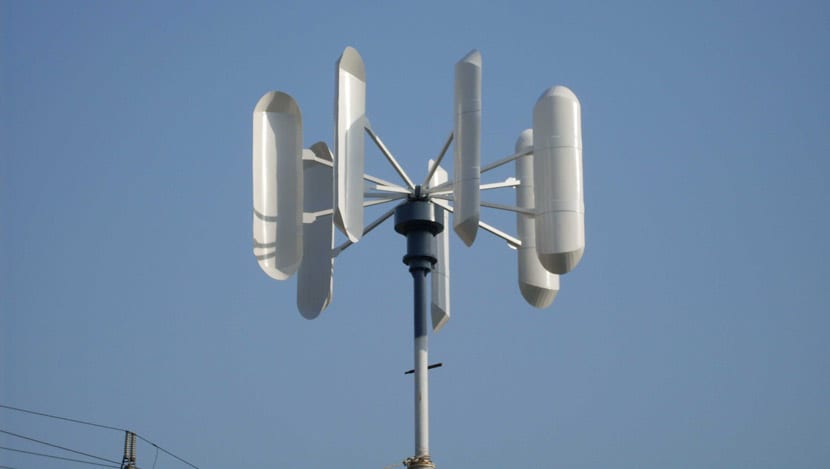
As mentioned, vertical or vertical axis wind turbines do not need an orientation mechanism, and what would be the electric generator can be found located on the ground.
Su energy production is lower and it has some small handicaps like it needs to be motorized to get going.
There are three types of vertical wind turbines as are Savonius, Giromill and Darrrieus.
Drawbacks
One of the most common problems wind turbines is its immense size, in addition to the vibrations and noise they cause. For this reason, they are usually located in areas far from homes. However, companies and scientists around the world continue to work to build smaller turbines (You can consult an article previously made on mini wind power), o silent that can be located in urban areas.
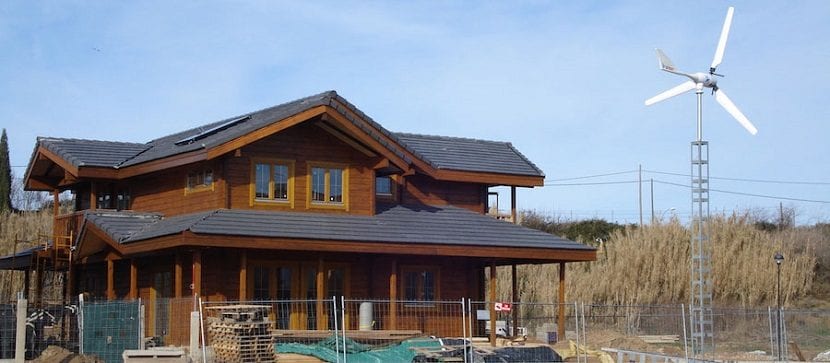
But one of the problems that most worries in the field of the generation of the wind power It is the variability of the source, that is, of the wind. The turbines In general, they are prepared to function optimally when the wind blows within a certain speed range. On the one hand, a certain minimum speed is required to move the blades, on the other hand there is also a maximum limit.
For example, the most common is that these limits are with Wind speeds between 3 and 24 meters per second. The minimum is called the connection speed, that is, the minimum to generate some electricity, and the maximum is called the cut-off speed, that is, when it is already counterproductive, since it could break the mechanism.
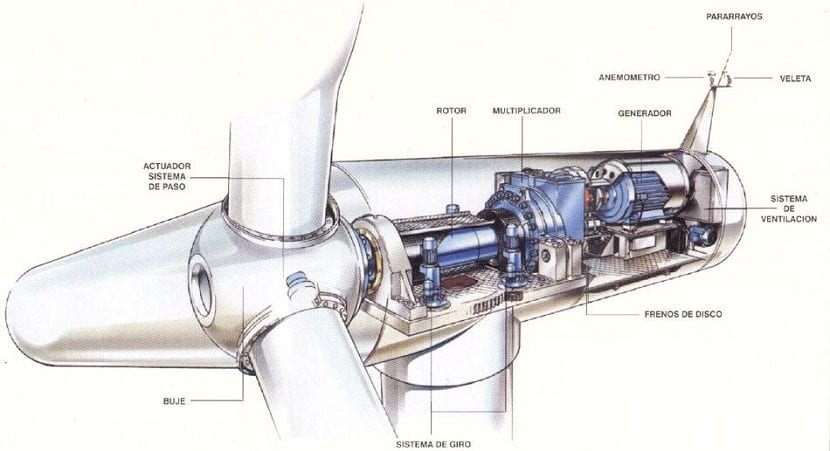
Un Windmill can be alone or in wind farms, on land forming the onshore wind farms, on the coast of the sea or they can even be installed on the waters at a certain distance from the coast in what is called offshore or offshore wind farm.

Constitution of a wind turbine or wind turbine
There are thousands of wind farms full of models TEEH (horizontal axis wind turbines). These machines are made up of the following segments.
Tower and foundation: The tower foundations can be flat or deep, guaranteeing in both cases the stability of the wind turbine, the fastening of the nacelle and the motor blades. The foundation must also absorb the thrusts caused by the variation and power of the wind.
The towers can be of different types depending on their characteristics:
- Steel tubular: Most wind turbines are built with tubular steel towers.
- Concrete towers: They are built in the same place, allowing the necessary height to be calculated.
- Precast concrete towers: They are assembled by ready-made pieces and their segments are placed in the same place.
- Lattice structures: They are manufactured using steel profiles.
- Hybrids: They can have characteristics and materials of various types of tower.
- Tensioned mast towers with winds: They are characterized by being wind turbines of smaller dimensions.
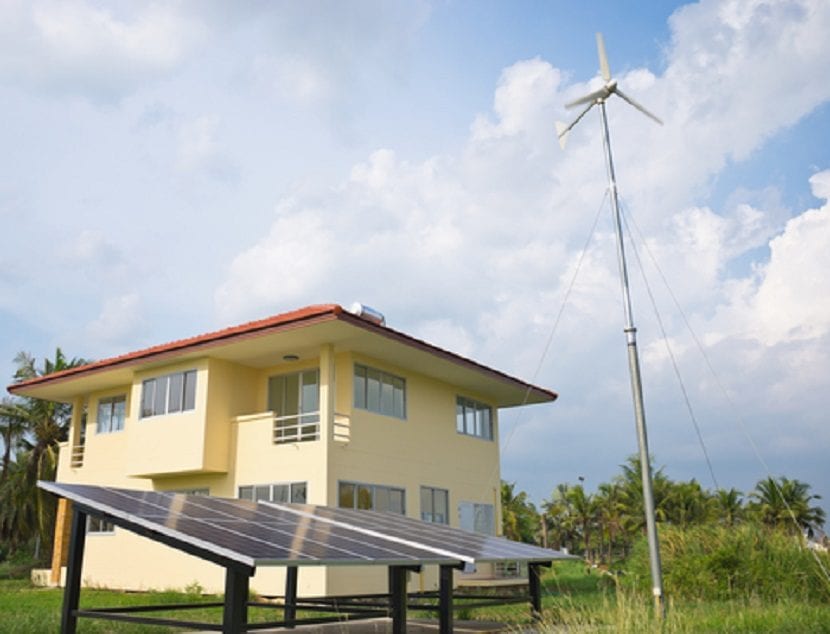
Rotor: The rotor is the "heart" of every windmill, as it supports the turbine blades, moving them mechanically and rotationally to transform the thrust of the wind into energy.
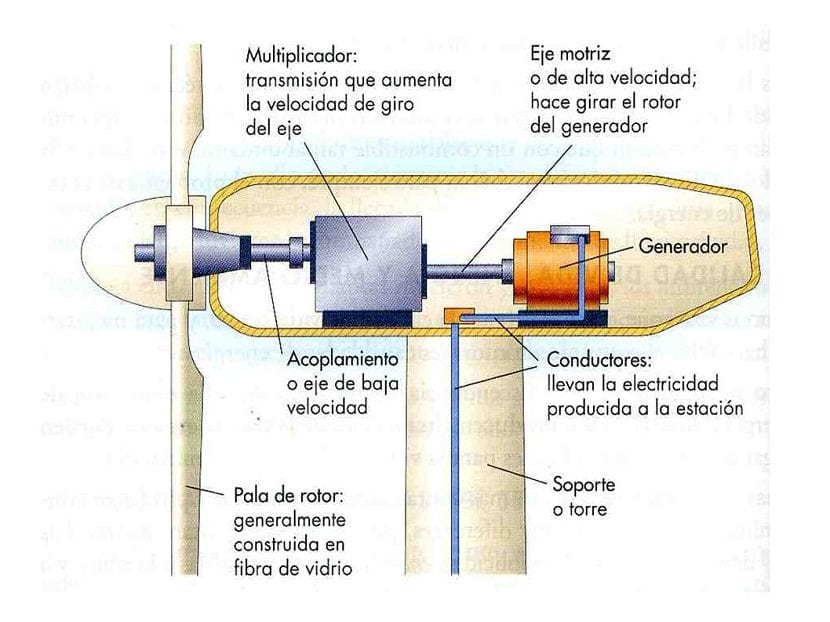
Gondola: It is the most visible head of the wind turbine, the helmet that hides and maintains all the turbine machinery. The gondola joins the tower using bearings to be able to follow the direction of the wind.
Multiplier box: In addition to being able to withstand the variations of the wind, the gearbox has the task of coupling the low rotational speeds of the rotor and the high speeds of the generator. As his own word says; manages to multiply the 18-50 rpm generated by the natural movement of the rotor in approximately 1.750 rpm when it leaves the generator.

Generator: It is in charge of converting mechanical energy into electrical energy. For high-power turbines, double-fed asynchronous generators are used, although conventional synchronous and asynchronous generators are also abundant.
Brakes: Mechanical brakes are used in the power train, being necessary in them a high coefficient of friction in static and great resistance to compression.
Electrical equipment of a wind turbine or windmill
Wind turbines current They are not only made up of blades and a generator to bring cheap energy to homes. Wind turbines must also have a individual power supply system and numerous sensors. The latter manage to monitor and measure the temperature, the direction of the wind, its speed and other parameters that may appear inside the gondola or in the surroundings.
